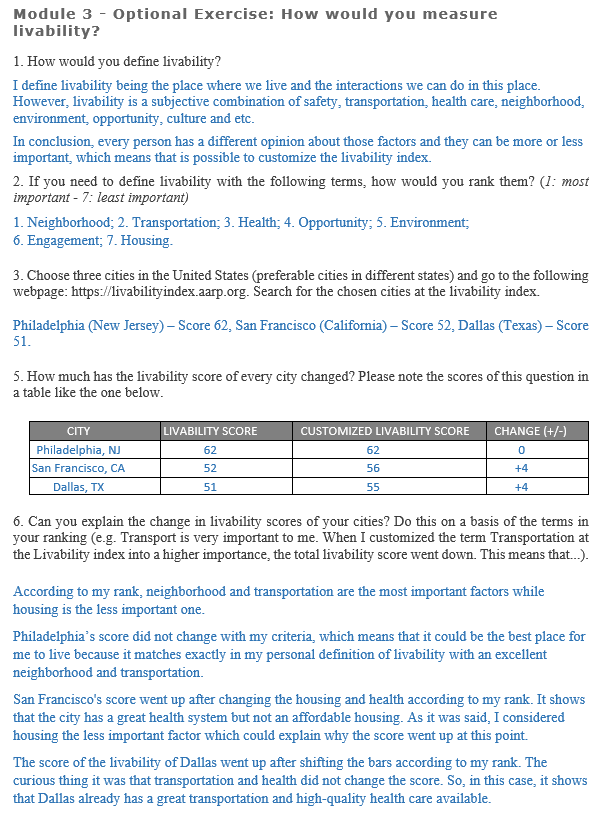
Uploaded on 2017-08-04 by Ariela Monteiro de Alvarenga
Module 3 - Optional Exercise: How would you measure livability? 1. How would you define livability? I define livability being the place where we live and the interactions we can do in this place. However, livability is a subjective combination of safety, transportation, health care, neighborhood, environment, opportunity, culture and etc. In conclusion, every person has a different opinion about those factors and they can be more or less important, which means that is possible to customize the livability index. 2. If you need to define livability with the following terms, how would you rank them? (1: most important - 7: least important) 1. Neighborhood; 2. Transportation; 3. Health; 4. Opportunity; 5. Environment; 6. Engagement; 7. Housing. 3. Choose three cities in the United States (preferable cities in different states) and go to the following webpage: https://livabilityindex.aarp.org. Search for the chosen cities at the livability index. Philadelphia (New Jersey) – Score 62 San Francisco (California) – Score 52 Dallas (Texas) – Score 51 5. How much has the livability score of every city changed? Please note the scores of this question in a table like the one below. CITY LIVABILITY SCORE CUSTOMIZED LIVABILITY SCORE CHANGE(+/-) Philadelphia, NJ 62 62 0 San Francisco, CA 52 56 +4 Dallas, TX 51 55 +4 6. Can you explain the change in livability scores of your cities? Do this on a basis of the terms in your ranking (e.g. Transport is very important to me. When I customized the term Transportation at the Livability index into a higher importance, the total livability score went down. This means that...). According to my rank, neighborhood and transportation are the most important factors while housing is the less important one. Philadelphia’s score did not change with my criteria, which means that it could be the best place for me to live because it matches exactly in my personal definition of livability with an excellent neighborhood and transportation. San Francisco's score went up after changing the housing and health according to my rank. It shows that the city has a great health system but not an affordable housing. As it was said, I considered housing the less important factor which could explain why the score went up at this point. The score of the livability of Dallas went up after shifting the bars according to my rank. The curious thing it was that transportation and health did not change the score. So, in this case, it shows that Dallas already has a great transportation and high-quality health care available.